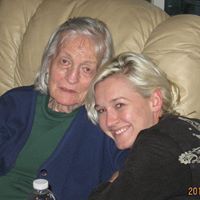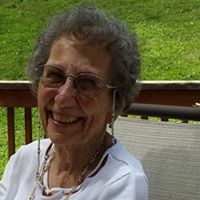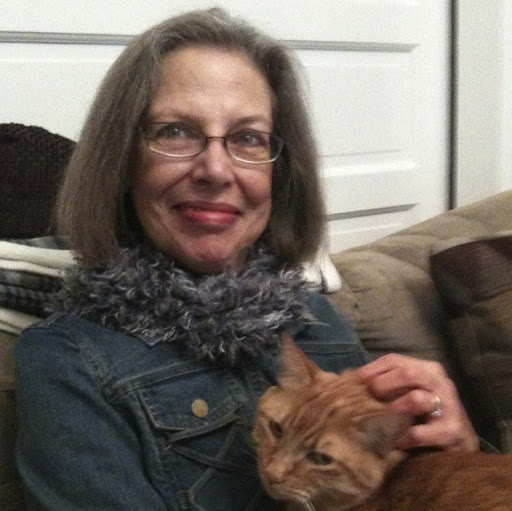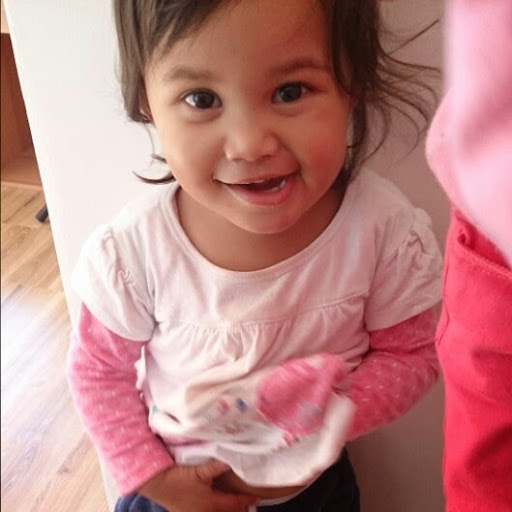Marion D Reid
age ~63
from Belleville, NJ
- Also known as:
-
- Miriam Reed
Marion Reid Phones & Addresses
- Belleville, NJ
- 990 President St, Brooklyn, NY 11225 • (718)6041401 • (718)7351366
- 990 President St APT 5F, Brooklyn, NY 11225 • (718)7748494
- 57 Leslie Pl, Irvington, NJ 07111 • (973)3712787
- Newark, NJ
- Queens Village, NY
- Queens Vlg, NY
Isbn (Books And Publications)




Name / Title
Company / Classification
Phones & Addresses
Director
New York Blood Center
Hospital & Health Care · Health/Allied Services · Health/Allied Services Mfg Biological Products · Health/Allied Services Commercial Physical Research Noncommercial Research Organization · Noncommercial Research Organization Commercial Physical Research
Hospital & Health Care · Health/Allied Services · Health/Allied Services Mfg Biological Products · Health/Allied Services Commercial Physical Research Noncommercial Research Organization · Noncommercial Research Organization Commercial Physical Research
310 E 67 St, New York, NY 10065
T Corporation System, Hartford, CT 06103
(212)5703010, (212)5703275, (212)5703180, (212)5703000
T Corporation System, Hartford, CT 06103
(212)5703010, (212)5703275, (212)5703180, (212)5703000
Director
BioArray Solutions
Biotechnology · Noncommercial Research Organization · Research & Development in Biotechnology
Biotechnology · Noncommercial Research Organization · Research & Development in Biotechnology
Warren, NJ 07059
35 Technology Dr STE 100, Warren, NJ 07059
(908)2268200, (908)2260800
35 Technology Dr STE 100, Warren, NJ 07059
(908)2268200, (908)2260800
Us Patents
-
Method Of Nucleic Acid Typing For Selecting Registered Donors For Cross-Matching To Transfusion Recipients
view source -
US Patent:7449295, Nov 11, 2008
-
Filed:Oct 24, 2005
-
Appl. No.:11/257285
-
Inventors:Ghazala Hashmi - Holmdel NJ, US
Michael Seul - Fanwood NJ, US
Marion E. Reid - Jamaica Estates NY, US
Michael Pierce - Flemington NJ, US -
Assignee:Bio Array Solutions - Warren NJ
New York Blood Center - New York NY -
International Classification:C12Q 1/68
-
US Classification:435 6
-
Abstract:Disclosed are a method and an algorithm for genetic cross-matching based on the comparison of recipient and donor genotypes—and the underlying combinations of alleles and haplotypes. The method of the invention, rather than focusing on phenotype prediction, instead relies on a comparison of genetic variants identified in the recipient and available donors, whose information preferably will be compiled in a widely available donor registry, to maximize molecular compatibility. The genotypes can be matched based on the weighted clinical significance of a genotypic difference between donor and recipient, such that certain mismatches are more acceptable than others.
-
Primers For Exons Of Variants Of Rhce And Rhd Genes
view source -
US Patent:7612193, Nov 3, 2009
-
Filed:Sep 9, 2008
-
Appl. No.:12/206859
-
Inventors:Ghazala Hashmi - Holmdel NJ, US
Michael Seul - Fanwood NJ, US
Marion E. Reid - Jamaica Estates NY, US
Michael Pierce - Flemington NJ, US -
Assignee:BioArray Solutions Ltd. - Warren NJ
-
International Classification:C07H 21/04
C12N 15/12 -
US Classification:536 2433
-
Abstract:Disclosed are a method and an algorithm for genetic cross-matching based on the comparison of recipient and donor genotypes—and the underlying combinations of alleles and haplotypes. The method of the invention, rather than focusing on phenotype prediction, instead relies on a comparison of genetic variants identified in the recipient and available donors, whose information preferably will be compiled in a widely available donor registry, to maximize molecular compatibility. The genotypes can be matched based on the weighted clinical significance of a genotypic difference between donor and recipient, such that certain mismatches are more acceptable than others.
-
Identification Of The Dombrock Blood Group Glycoprotein As A Polymorphic Member Of The Adp-Ribosyltransferase Gene Family
view source -
US Patent:20050100896, May 12, 2005
-
Filed:Sep 24, 2001
-
Appl. No.:10/381325
-
Inventors:Jeffery Miller - Potomac MD, US
Alexander Gubin - North Potomac MD, US
Marion Reid - Jamaica Estates NY, US -
International Classification:C12Q001/68
C07H021/04
C12N009/00
A61K039/00
C12N015/74 -
US Classification:435006000, 435069100, 435252300, 435183000, 435320100, 424185100, 536023200
-
Abstract:The present invention provides an isolated peptide comprising a Dombrock carrier molecule that contains either a Dombrock (a) antigen or a Dombrock (b) antigen. Further, the present invention provides a nucleic acid encoding a Dombruck carrier molecule or fragments thereof. Moreover, a nucleic acid encoding a Dombrock (a) antigen or fragments thereof is provided. The present invention also provides a nucleic acid encoding a Dombrock (b) antigen or fragments thereof. Kits comprising antibodies to either the Dombrock (a) antigen or the Dombrock (b) antigen are also provided. Moreover, kits comprising either the Dombrock (a) antigen or the Dombrock (b) antigen, and kits comprising nucleic acids that encode the Dombrock (a) antigen or the Dombrock (b) antigen are provided. Methods for detecting the Dombrock (a) antigen or the Dombrock (b) antigen, and methods for detecting antibodies specifically binding to the Dombrock (a) antigen or the Dombrock (b) antigen are provided.
-
Detection Of Blood Group Genes
view source -
US Patent:20090104612, Apr 23, 2009
-
Filed:Oct 20, 2008
-
Appl. No.:12/254707
-
Inventors:Marion Reid - Jamaica NY, US
Asok Chaudhuri - Hicksville NY, US -
Assignee:New York Blood Center, Inc. - New York NY
-
International Classification:C12Q 1/68
C07H 21/04 -
US Classification:435 6, 536 231
-
Abstract:Disclosed herein are nucleic acid molecules which permit the accurate and direct determination of blood groups based on the presence of certain genes. A method of determining blood groups is also provided.
-
Method Of Making Monoclonal Antibodies Using Polymorphic Transgenic Animals
view source -
US Patent:60546328, Apr 25, 2000
-
Filed:Nov 15, 1996
-
Appl. No.:8/749527
-
Inventors:Marion E. Reid - New York NY
-
Assignee:New York Blood Center, Inc. - New York NY
-
International Classification:A61K 4800
C12N 510
C12N 528
C12N 1509 -
US Classification:800 6
-
Abstract:The invention relates to a method for making monoclonal antibodies having pre-defined specificity for an epitope characteristic of or unique to a single form of a polymorphic protein. The method includes constructing a first transgenic animal to express a first form of a polymorphic protein encoded by a first allele of a gene encoding the protein; constructing a second transgenic animal to express a second form of the polymorphic protein encoded by a second allele of the gene encoding the protein; and immunizing the first transgenic animal with cells from the second transgenic animal expressing the second form of the polymorphic protein to induce an immune response in the first transgenic animal yielding an antibody specific for an epitope peculiar to the second form of the polymorphic protein. The invention further includes hybridoma cells secreting a monoclonal antibody specific for the second form of the protein. The invention is particularly advantageous in the context of making monoclonal antibodies and derivative reagents specifically identifying polymorphic blood group proteins, such as the Duffy gp-Fy protein.
Resumes

Marion Reid
view source
Marion Reid
view source
Marion Reid
view source
Marion Reid
view sourceClassmates

Marion Reid (Senior)
view sourceSchools:
Booth Memorial High School St. John's Peru 1967-1971
Community:
Gloria Stone, Gary Holwell, Joyce Reeves

Marion Reid (Senior)
view sourceSchools:
Booth Memorial High School St. John's Peru 1966-1970
Community:
Gloria Stone, Gary Holwell, Joyce Reeves

Marion Reid (Skillstad)
view sourceSchools:
King Edward High School Vancouver Saudi Arabia 1945-1949
Community:
Olivia Jensen, Jeannette Glover, Lawrence Larry, Jim Greenwood, Sharon Bethune

Marion Reid (Keats)
view sourceSchools:
Queen Elizabeth High School Sept-iles Kuwait 1965-1969
Community:
Kathy Davidson, Marni Turnbull, Nancy Ormston, Lee Morris, Steven Delahaye, Peggy Mason, Sheila Smith, Peggy Gallichon, Lynda Lehman

Marion Reid, Tuscola High...
view source
Tuscola High School, Wayn...
view sourceGraduates:
Darlene Franklin (1975-1979),
Theresa Smith (1985-1989),
Karina Smith (1986-1990),
April Benson (1984-1988),
Marion Reid (1969-1973)
Theresa Smith (1985-1989),
Karina Smith (1986-1990),
April Benson (1984-1988),
Marion Reid (1969-1973)
Plaxo

Marion Reid
view sourceCalifornia State University San Marcos
Myspace
Youtube
Flickr

Marion Reid
view source
Marion Reid
view source
Marion M. Reid
view source
Marion Reid
view source
Marion Reid
view source
Marion Thorburn Reid
view source
Marion Reid
view source
Marion Reid
view sourceGoogleplus

Marion Reid
Tagline:
Retired; living in southern California

Marion Reid

Marion Reid

Marion Reid

Marion Reid
Get Report for Marion D Reid from Belleville, NJ, age ~63















